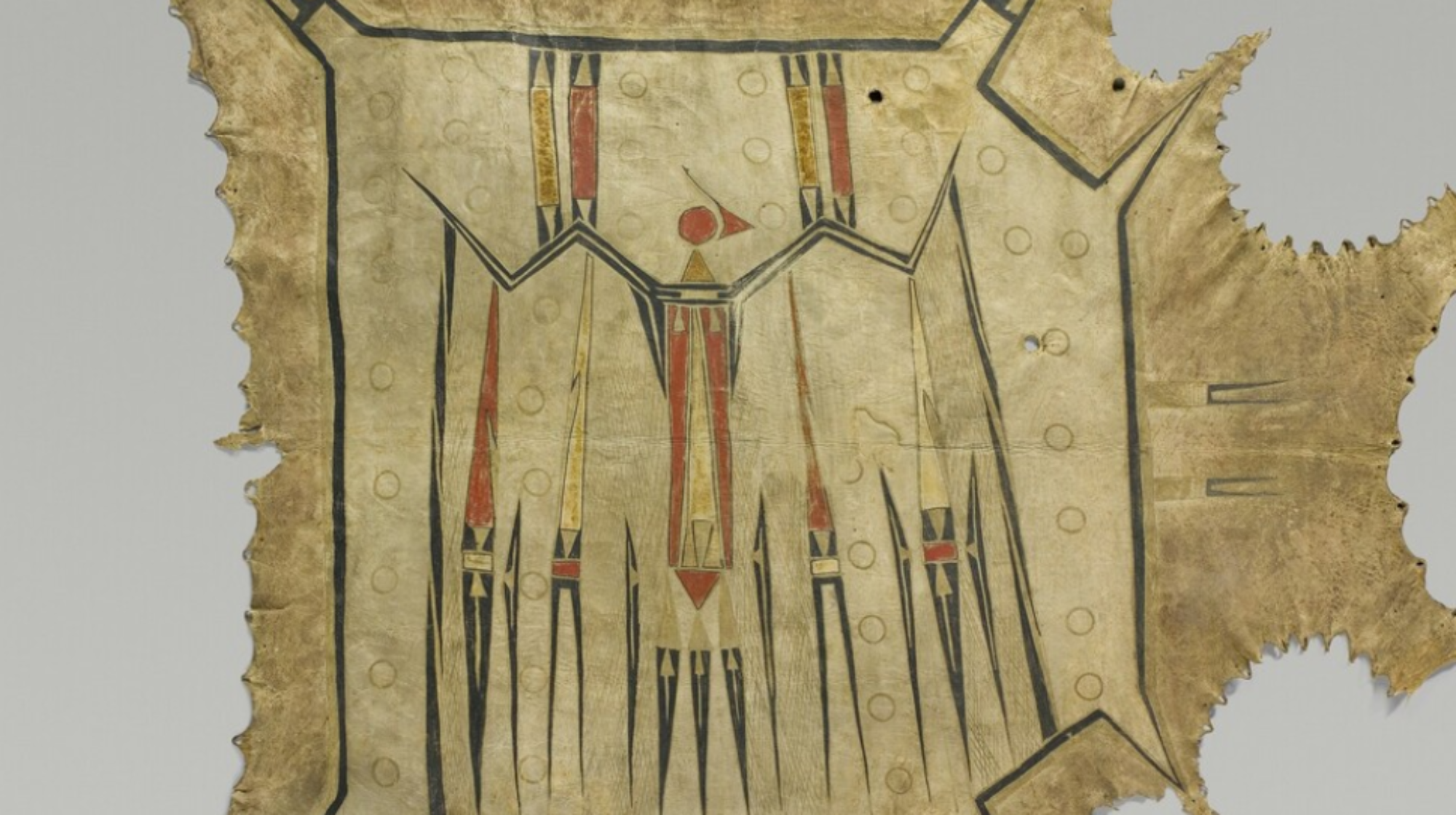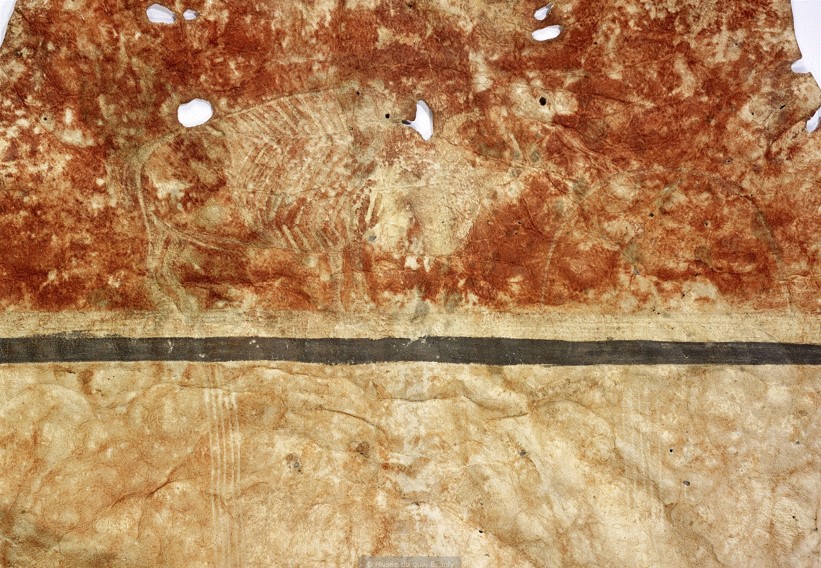Check this great Interview by Bridget Sullivan and Erin Cicora at HWW with members of the Reclaiming Stories team.
Michael Galban: Requickening and Awakening the Dormant
In conjunction with the special exhibition, Minohsayaki ‘Painted Robes’: a Peewaalia and Myaamia Story of Reclamation, artist Michael Galban (Washoe and Mono Lake Paiute) presented a lecture entitled: “Requickening and Awakening the Dormant.“ The lecture presented on March 16th at the Richard and Carole Cocks Art Museum at Miami University (RCCAM), Oxford, Ohio, explored the histories of Woodland arts traditions, how these painted hide objects entered European and American collections. Galban has researched how these items were used and also documented over time, focusing on the significance and process of painted hides by Tribes of the Great Lakes region, particularly from the 17th-18th centuries. These painted hide robes have played an important role for Indigenous people – they were used for protection from the elements, and a place to convene with friends and loved ones, as well as tracing of history and culture over generations. Galban also discussed the significance of making the hides, painting techniques, usage of pigments, and sourcing of materials to create different colors. To find out more about the painted robes and the exhibition, please see this webinar hosted by the Miami University Alumni Association.
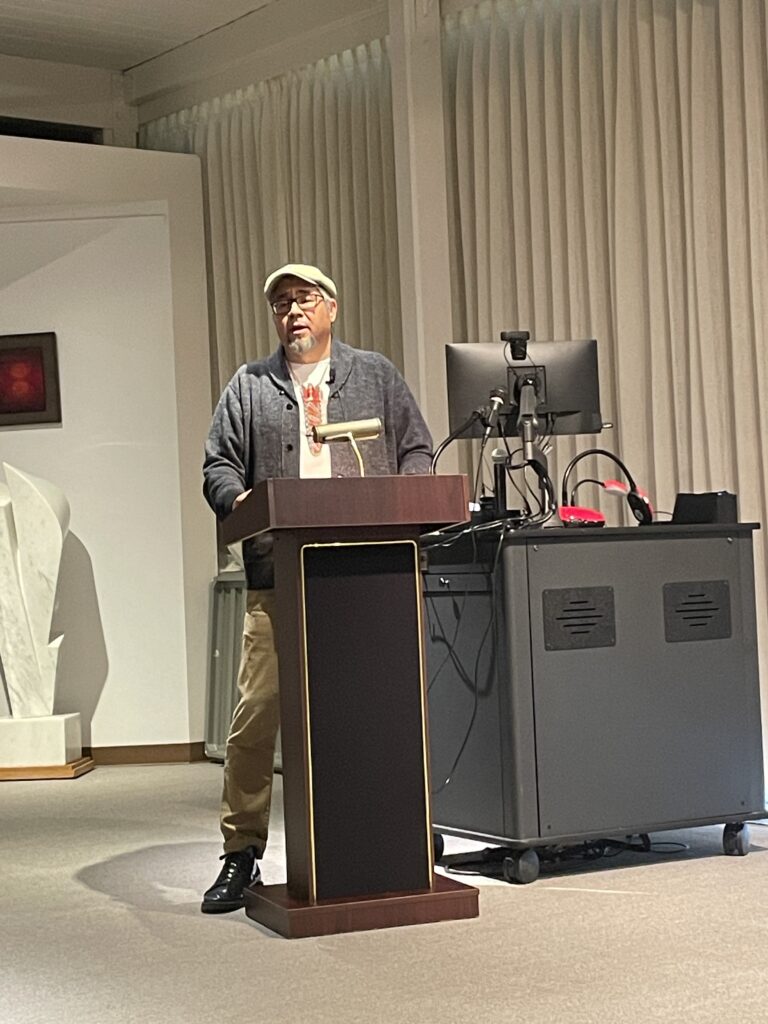
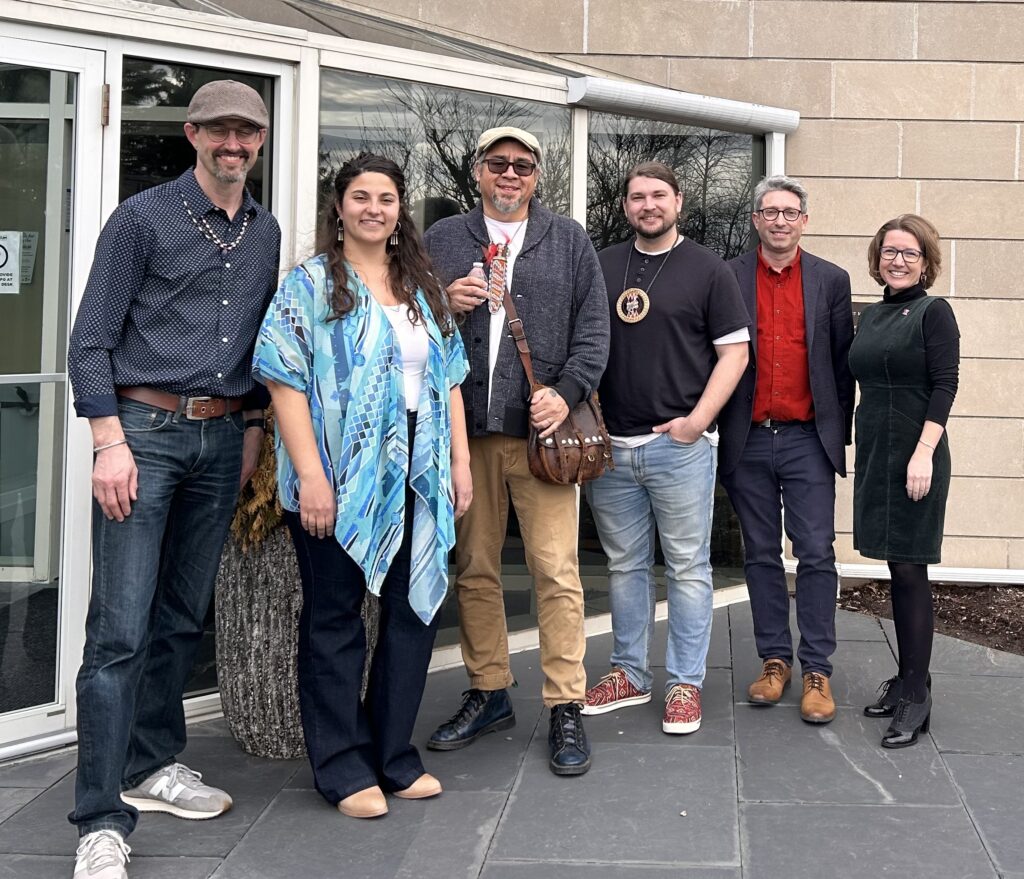
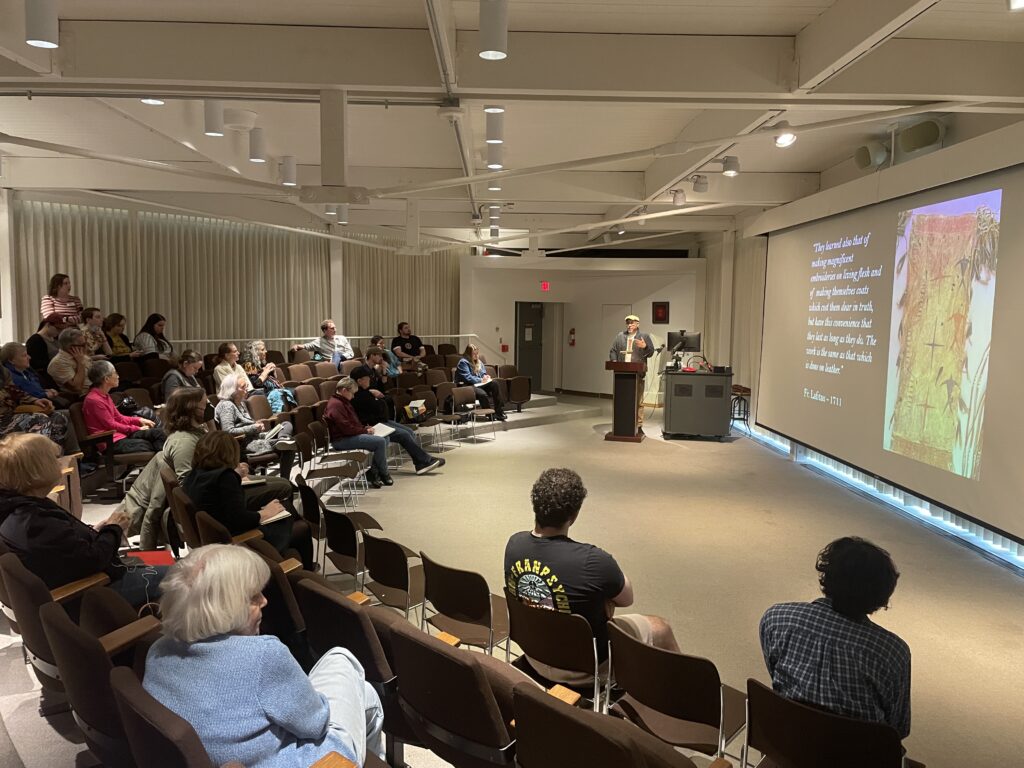
This program was supported by a grant from the Andrew W. Mellon Foundation through the Humanities Without Walls Consortium, which is administered by the University of Illinois. The exhibition and program is part of the Reclaiming Stories Project.
George Ironstrack and Liz Ellis in conversation about Minohsayaki
Please register for the interrelated upcoming Alumni Association webinar on February 22, 12PM Eastern:
“Oklahoma to Paris and Back Again: Peewaalia and Myaamia Stories of Minohsayaki ‘Painted Hide Robes’
Join in conversation with George Ironstrack, Assistant Director of the Myaamia Center at Miami University and citizen of the Miami Tribe of Oklahoma (Myaamia), and Elizabeth Ellis, Associate Professor of History at Princeton University, and citizen of the Peoria Tribe of Indians of Oklahoma (Peewaalia) about minohsayaki ‘Painted Robes’, an art form that was practiced by both the Peewaaliaki and Myaamiaki before contact with Europeans in the late 1600s and early 1700s.
This discussion will help frame the research, reconnection, and the reclamation of cultural heritage with minohsayaki ‘Painted Robes’, with particular emphasis on examples in a Parisian museum collection. This webinar will highlight RCCAM’s featured exhibition, Minohsayaki ‘Painted Robes’: A Peewaalia and Myaamia Story of Reclamation. Using a community-curated approach, this exhibition is created in the voices of Peewaaliaki ‘Peoria Indian’ and Myaamiaki ‘Miami Indian’ people. The link to register for the Webinar can be found here: https://alumlc.org/MIAMIOH/34711
Minohsayaki Exhibit In the News
Listen to this radio story on Cincinnati Public Radio/ NPR about the Mihohsayaki exhibit at Miami U and hear George discuss the project!!
Minohsayaki ‘Painted Robes’ Exhibition at Miami University gives voice to Peewaalia and Myaamia peoples
We are excited to announce the opening in January 2024 of the exhibit Minohsayaki ‘Painted Robes,’ at the Richard and Carol Cocks Art Museum at Miami University in Ohio. This exhibition is a product of work by Reclaiming Stories project members in partnership with the museum and of course the Miami and Peoria communities. It will run through the Summer of 2024. Please see this article for information about the project!!
Summer Learning Lab 2023
The Reclaiming Stories Team met in Miami, OK, for another summer Learning Lab, August 2023. This year, our event focused on brain tanning a deer hide. Read all about it here.
Reclaiming Stories in the News
Check out this great story/ news release about the Reclaiming Stories summer learning lab, August 2022.
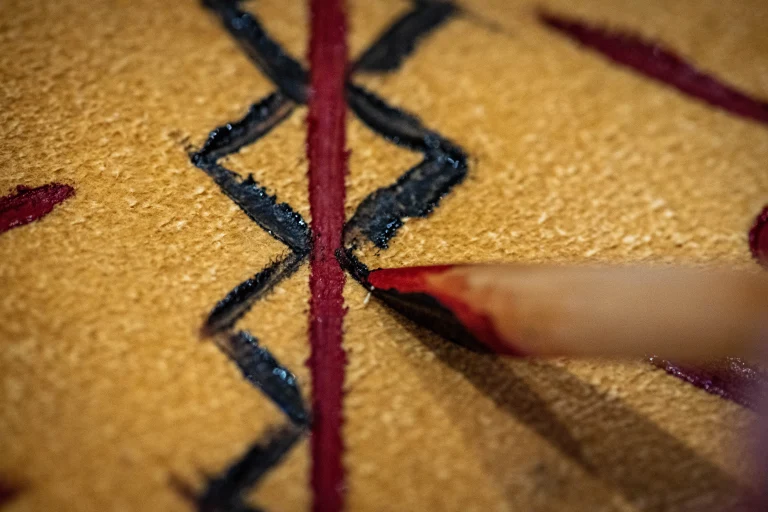
In this story, Jodi Heckel gives an overview of the Learning Lab activities and interviews Bob Morrissey about the goals of the project– to help revitalize hide painting traditions in the Peoria and Miami Tribal communities. Thanks Jodi!
Summer Learning Lab ’22 Recap
To learn about our summer Learning Lab in 2022 in Miami, OK, please see here:
Reclaiming Stories
The Reclaiming Stories project is a collaboration among members of the Peoria and Miami Tribes, along with associated scholars, working on history and practice of hide painting. The group formed in 2020 and won a major grant from the Andrew W. Mellon Foundation (through the Humanities Without Walls Consortium) to undertake a community-based research project through 2025. Look here for news and updates about this exciting project!
